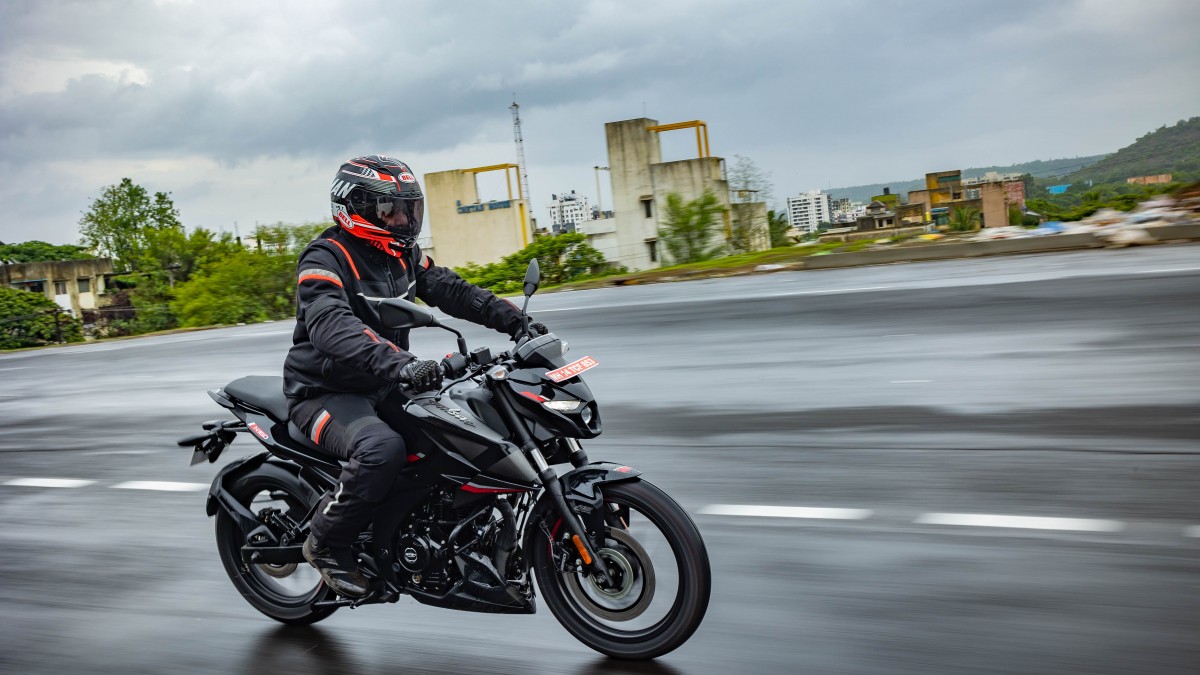

Bajaj India recently introduced the newest member of its next-generation Pulsar family, the Pulsar N160. The new Pulsar N160 will join its bigger 250cc siblings in the Pulsar lineup. The 160cc Pulsar was previously only available as the Pulsar NS160, which is an older platform. With the new platform, the 160cc street motorcycle now gets new looks and a host of segment-best and segment-first features. The 160cc Pulsar is back in a new avatar to take on its competition.
The latest Pulsar N160 is available in two variants – Singel-Channel ABS and Dual-Channel ABS. A single-channel ABS has been the norm in its segment. However, the N160’s Dual-Channel ABS makes it a segment-first. The pricing for the Pulsar N160 starts at INR 1,22,854 ex-showroom for the Single-Channel ABS variant. Meanwhile, the Dual-Channel ABS variant retails for INR 1,27,853 ex-showroom.
The Pulsar N160’s Single-Channel ABS variant comes in three colour options. These include – Racing Red, Caribbean Blue and Techno Grey. On the other hand, the Dual-Channel ABS variant is only available in an exclusive Brooklyn Black colour option.
The Bajaj Pulsar N160 uses a 164.82cc oil-cooled twin-spark 2-valve SOHC engine. The fuel-injected motor churns out 16 PS at 8,750 rpm and 14.65 Nm of torque at 6,750 rpm. The brand also claims the motor offers the widest torque band in its segment. The gearbox is a constant-mesh 5-speed unit. Bajaj is also claiming that the Pulsar N160 has the fastest in-gear acceleration times in its class. These include the quickest 30 to 70 kmph times in 3rd, 4th and 5th gear. The bike manufacturer is also claiming that the N160 offers the best gear shifting feel in its class.
The two variants of the Pulsar N160 have different suspension setups at the front. The Single-Channel ABS variant uses 31 mm telescopic forks at the front, while the Dual-Channel ABS variant uses larger 37 mm telescopic forks. However, both use a Nitrox monoshock at the rear. Bajaj is claiming the Dual-Channel ABS variant’s front suspension is the best in its class.
As for the braking setup, the two variants differ in front disc sizes. The Single-Channel ABS variant gets a 280 mm front disc, while the Dual-Channel ABS variant gets a 300 mm one. At the rear, both the variants use a 230 mm disc brake. As for the tyres, the N160 uses a 100/80 section tyre at the front and a 130/70 section tyre at the back.
Also Read: 2022 Bajaj Pulsar N160 Vs. TVS Apache RTR 160 4V – Specification Comparison